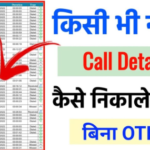Buying a used bike can be an excellent way to save money while still getting a high-quality ride. However, it comes with its own set of challenges. Whether you’re hunting for a road bike, mountain bike, or commuter bike, there are several factors you need to consider to ensure you’re making a sound purchase. Here’s a comprehensive guide to help you navigate the process and find a bike that’s right for you.
1. Determine Your Needs and Budget
Before diving into the specifics of bike inspection, clarify what type of bike best suits your needs. Are you looking for a road bike for long-distance rides, a mountain bike for rugged trails, or a commuter bike for urban travel? Understanding your needs will help you focus on bikes that meet your requirements.
Next, set a budget. While buying used is typically less expensive, prices can vary significantly based on the bike’s condition, brand, and components. Having a clear budget will help you avoid overspending and narrow down your choices.
2. Research the Bike Model
Once you’ve identified the type of bike you want, research specific models and brands. Some brands and models are known for their durability and performance, while others might have common issues. Look for reviews and forums where other cyclists share their experiences with various bikes. This knowledge will help you identify red flags and gauge whether a particular bike is a good deal.
3. Inspect the Frame
The frame is the most crucial component of any bike, and its condition will greatly impact the bike’s overall performance and longevity. Here’s what to check:
- Visual Inspection: Look for any visible damage such as cracks, dents, or bent areas. Even minor imperfections can signal deeper issues.
- Rust and Corrosion: Examine the frame for signs of rust or corrosion, especially if the bike has been used in wet or salty environments. Rust can compromise the frame’s structural integrity.
- Alignment: Check if the frame is properly aligned. An easy way to do this is to spin the wheels and see if they wobble. A misaligned frame can lead to poor handling and uneven tire wear.
4. Examine the Components
A bike’s components, including the drivetrain, brakes, and wheels, play a significant role in its performance. Here’s how to assess them:
- Drivetrain: Inspect the gears, derailleurs, and chain. Check for smooth shifting and listen for any unusual noises when pedaling. A worn chain or malfunctioning derailleur can be costly to repair or replace.
- Brakes: Test both the front and rear brakes. Ensure they engage properly and don’t squeal or feel spongy. Check the brake pads for wear and make sure they align correctly with the rims or rotors.
- Wheels: Spin the wheels and check for true (i.e., they should not wobble side to side). Inspect the rims for cracks or dents and make sure the tires have adequate tread.
5. Check the Bike’s Fit
A bike that doesn’t fit well can cause discomfort and affect your riding experience. When evaluating fit, consider the following:
- Frame Size: Ensure the frame size is appropriate for your height and leg length. Many bikes have a size chart available, or you can test ride the bike to see if it feels comfortable.
- Adjustability: Check if the seat and handlebars can be adjusted to fit your preferences. Adjustability can help you achieve a comfortable riding position.
- Test Ride: If possible, take the bike for a test ride. Pay attention to how it feels and handles. This will give you a good sense of whether it’s the right fit for you.
6. Assess the Bike’s History
Understanding the bike’s history can provide valuable insights into its condition:
- Previous Ownership: Ask the seller how long they’ve owned the bike and how often it was used. A bike that’s been well-maintained but lightly used is generally a better option.
- Maintenance Records: Inquire about any maintenance or repairs that have been done. Regular servicing and timely repairs can extend a bike’s lifespan.
- Accident History: Ask if the bike has been involved in any accidents. Even minor accidents can sometimes cause hidden damage.
7. Negotiate the Price
Once you’ve inspected the bike and are satisfied with its condition, it’s time to discuss the price. Research similar bikes to understand the market value and use this information to negotiate. Don’t be afraid to make a lower offer, especially if you’ve identified any issues that might require repairs.
8. Consider a Professional Inspection
If you’re unsure about assessing the bike’s condition yourself, consider having it inspected by a professional. A bike mechanic can provide a thorough evaluation and identify any potential issues that you might have missed.
9. Verify the Seller’s Credibility
Finally, make sure you’re buying from a reputable seller. If purchasing from a private seller, ensure they have a good track record and are honest about the bike’s condition. If buying from a shop, check their reviews and ask about any warranties or return policies they offer.
Conclusion
Buying a used bike can be a rewarding experience if you take the time to do your homework and carefully inspect the bike. By following these tips—determining your needs, researching the bike model, inspecting the frame and components, checking the bike’s fit, assessing its history, negotiating the price, and considering a professional inspection—you’ll be well-equipped to find a great used bike that fits your needs and budget. Happy cycling!





